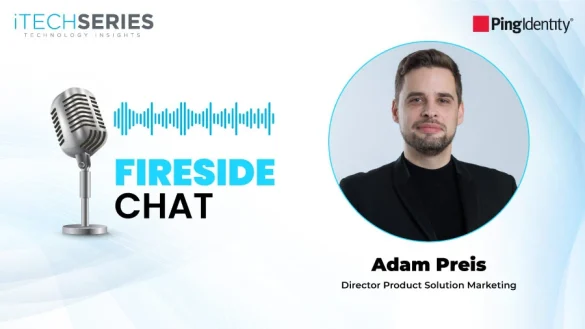Honni Marks, Senior ABM Global Program Manager at Red Hat, shares her journey from full-stack marketing to spearheading Account-Based Marketing strategies. She explores the art of 1:1 personalization, the vital role of cross-team collaboration, the practical application of AI in B2B marketing, and the importance of listening, learning, and creativity in driving real business impact.
Welcome to the interview series, Honni. Could you share your journey to becoming an ABM Marketing leader?
It’s been quite a journey! To date, I’ve worked at a wide variety of companies (Series A-E start-ups (1 IPO, 2 acquisitions, and 1 in limbo), as well as multiple public enterprise global companies, including Infor, Jarden Corporation, Pega, and now Red Hat/IBM. Each marketing role has helped shape me as a marketer and understand how important it is to align marketing with sales, which ultimately helps customers do more at their own companies. I’ve worked in a wide variety of marketing specialities, including demand gen/revenue marketing, events, content, PR, marketing data analysis, customer marketing, digital, email, and product marketing, to name a few. I believe the best ABM marketers are those with a diverse background and experience in multiple marketing disciplines. I currently work at Red Hat as an ABM 1:1 marketer with a number of Red Hat’s top-tier FSI and high-tech customers. I love working with sales, as well as global companies, which is why I feel ABM is a strong fit for my background and personality. I have enjoyed observing how the tech landscape has changed and reinvented itself over the years, as well as how ABM has evolved and continues to evolve within the industry.
What is your process for designing and delivering impactful Account-Based Marketing (ABM) programs from start to finish?
So much! What comes to mind are the following steps in creating and executing an impactful ABM program.
- Define Your Goals and Strategy: Start by identifying your objectives and creating a strategy to achieve them. Ensure your goals align with what your prospects or customers need and want from your product. Clearly define the unique selling point or value proposition for them.
- Focus on Individuals: Remember that you are marketing to real people with feelings, emotions, and stressors, not just titles or personas. Consider what will resonate with them and be open to listening and learning from their responses, or lack thereof.
- Take Action and Learn: Don’t hesitate to take risks and implement your plans. Even if an initiative doesn’t succeed, view it as a valuable learning experience that can help you adjust your approach.
- Seek Honest Feedback: Be transparent with growth-minded prospects and customers. Many will be willing to provide feedback before launch, which can significantly improve your campaign.
- Be Flexible and Adapt: Don’t be afraid to adjust your campaigns or programs mid-flight. If necessary, modify your messaging, event topics, or schedules to optimize performance.
- Analyze and Iterate: Review your results, both positive and negative, to determine your next steps. Share these insights with sales and other stakeholders to gather feedback and refine your strategies.
You’ve discussed the 1:1, 1:few, and 1:many ABM models. How do you apply each of these in real-world scenarios to deliver personalized customer experiences?
Whether it is 1:1, 1:few, or 1:many ABM models, the real-world scenarios are always about customer needs. 1:1 ABM has the luxury of marketing to specific business objectives of a specific customer. 1: few and 1: many can look at the commonality of pain points between customers to come up with relevant marketing programs that help solve customer challenges. Ultimately, you must consider your customer’ needs and their business objectives to create any marketing strategy. What works best is to study, analyze, and speak with your prospect/customer to understand their goals. Having a 2-way conversation is so important. From there, you can develop your strategy, tactics, and tools that can help you execute that strategy.
“Whether it is 1:1, 1:few, or 1:many ABM models, the real-world scenarios are always about customer needs.”
How and where do you leverage AI-powered tools to enhance your ABM strategies?
The biggest benefit I’ve seen to date regarding AI is in terms of data analysis. For example, reviewing forecasting data, customer interactions, and customer trends. I think we can all agree that in 2025, we will all experience data overload daily. Think about your day-to-day life and/or meetings, and what data you truly consumed. AI is helping us all condense and summarize data to make better decisions. Using AI to review presentations and help with potential shortfalls is a fun luxury that AI can provide. In terms of content, I’m not convinced that we are there yet. Maybe, but going back to my original answer, we are marketing to people, human beings. Anything with a corporate spiel or that sounds generic will likely be rejected. People can sniff it out. To stand out, you have to offer potential buyers something they can’t already get or that will take time for them to get (building themselves). AI can help with templates or suggested content, but a marketer needs to carefully review and edit the content provided.
In what ways has working within an integrated revenue organization improved alignment between your ABM efforts and teams like sales, customer success, product, and RevOps?
I would twist this question a bit to say that ABM is the one that helps integrate many of the functions you mention. At a large enterprise organization, there are often silos that ABM helps to bring together to meet customer needs. ABM is generally the integrated tie between sales, customer success, product, and other operational functions. I always appreciate customer success as a strong partner to ABM, as it is a function that cares about all aspects of a customer relationship, from new sales to adoption to keeping the customer ‘happy’ at all levels within the organization. When you have complex selling motions, there are a lot of cooks in the kitchen. Account teams can have blind spots in terms of focusing so much on one area that the other area of the business gets neglected. ABM can help here in terms of training, adoption, or helping craft a consistent story for the customer.
What learning or advice would you like to give aspiring ABM marketers on success and Setbacks?
Listen first, and always put yourself in the customer’s shoes. It is not about you. It is about them. AI can also help with data analysis and give you a sense of what the market, prospects, and/or customers are saying in a condensed, consumable format. Are you listening and creating a strategy based on what that data is telling you?
AI can help us market, but we are not marketing to AI. People change, the market changes, and customer needs change. Every day. Don’t be afraid of doing pilot test programs, and be courageous. A program or campaign that is low performing may be a blessing in disguise. It’s telling you what is not resonating with prospects/customers, and you are learning from that data. And of course, a little creativity goes a long way! After all, we are marketing to people, not just titles or a persona.
About Honni Marks
Honni Marks is a creative and versatile marketing professional with deep expertise in account-based marketing across 1:1, 1: few, and 1: many programs. With a background spanning startups to global enterprises like Infor, Pega, and Red Hat/IBM, she brings full-stack marketing experience across demand gen, field marketing, digital, content, and product marketing. Passionate about emerging technologies and sales alignment, Honni currently leads ABM efforts for top-tier FSI and hi-tech customers at Red Hat.











